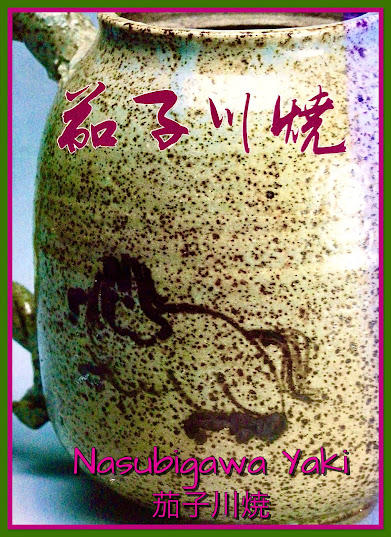I am researching this kind of ware. The kilns seemed to produce many styles, imitating some popular styles of the time.
An edited rough translation of a marker by Sakamoto District Cultural Heritage Preservation Society.
“It is said that the first time for the Nasubi river ware was around 1587, when Kichiemon Kato in Seto came to the kiln in Suwa and fired glazed pottery. In 1832, Kuemon Niwa of Hirokute tried to improve the pottery production that he started last year, and welcomed Kihei Kato from Tsumagaki Village, Toki County as his master to manufacture porcelain. In the eighth year of the same year, Toshihiraji Shinohara started making pottery in the same Hirokute, and in the fourteenth year of the same year, Shinkichi Yasuda called on the local people in front of Suwa to make porcelain. The Nasubi river ware developed after Toshihiraharu Shinohara built a five-chamber climbing kiln in 1845 in collaboration with Kakuzo Mizuno, who came from Ecchu (Toyama Prefecture). The most popular one was "Esugagawa Soma" which resembled Soma ware in Oshu, which created a unique elegant taste made by firing with namako glaze on clay. When the kiln stock system was abolished in the Meiji period, Koigahei's Kyuzaemon Fujii, in collaboration with Eihachi Suzuki, invited craftsmen from Kutani to fire Kutani-style tea utensils that are rare in the Nasubi River. There are many sales channels in the direction of Kiso, Ina, and Matsumoto, and it was sold to the people traveling on the Nakasendo Road at teahouses and potteries on the pass, and it continued until the end of the Meiji period as an important industry in the village.”





No comments:
Post a Comment